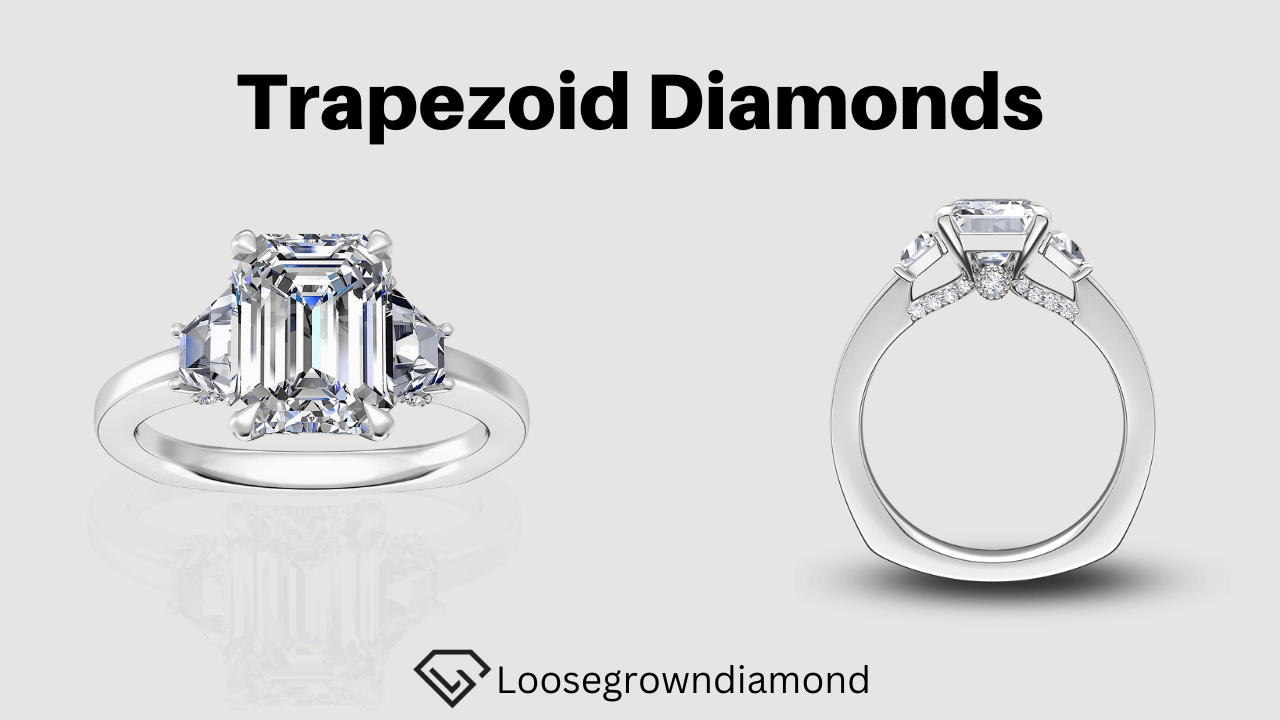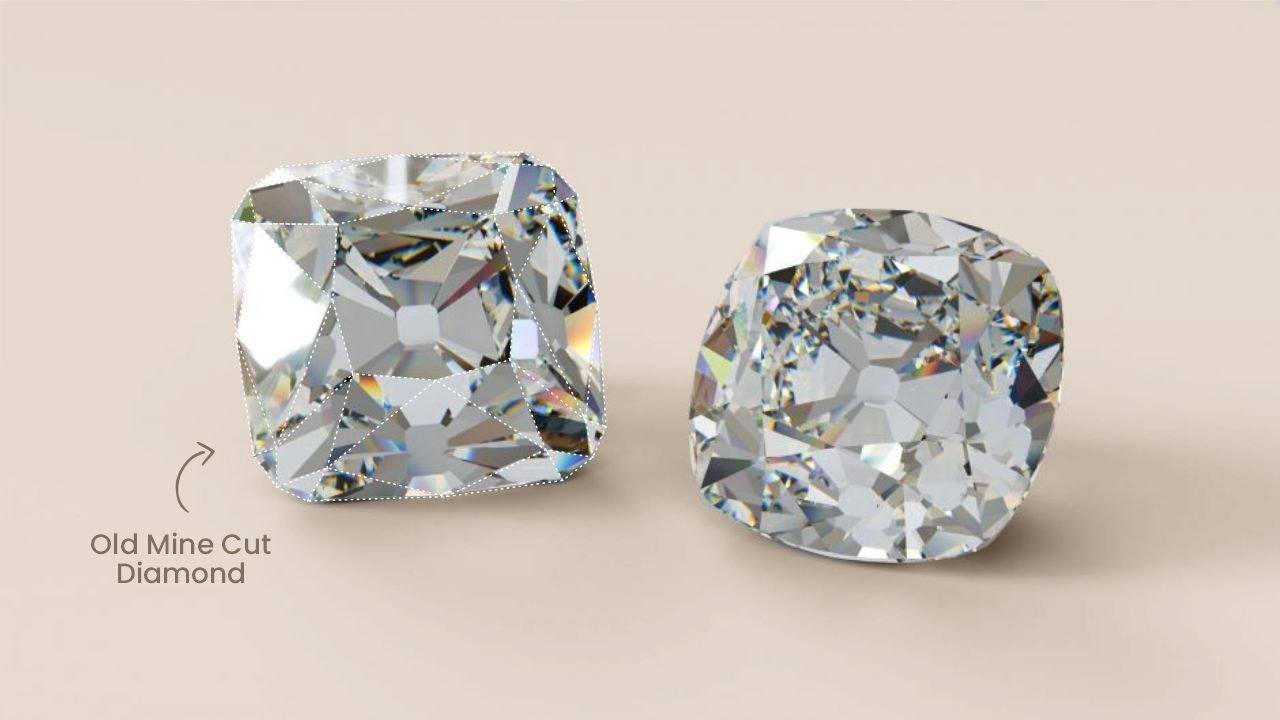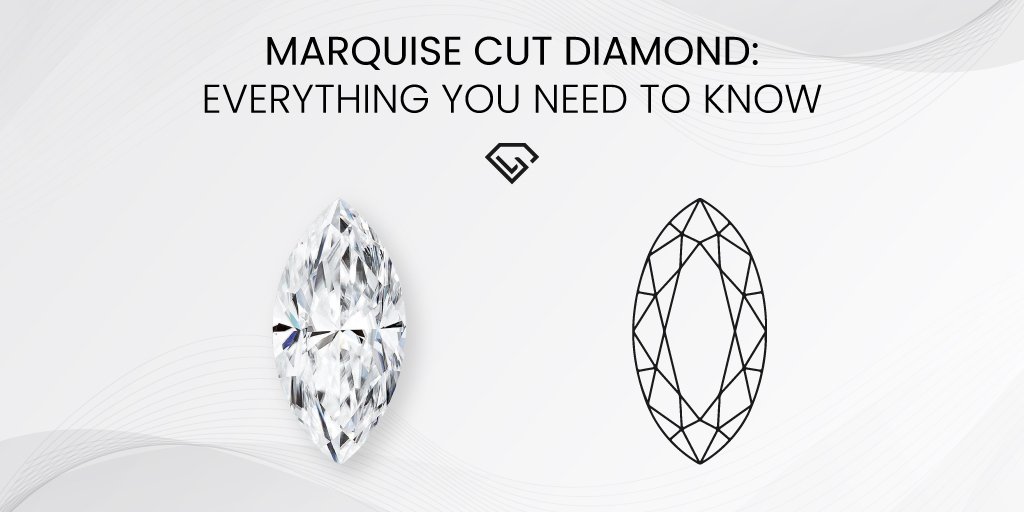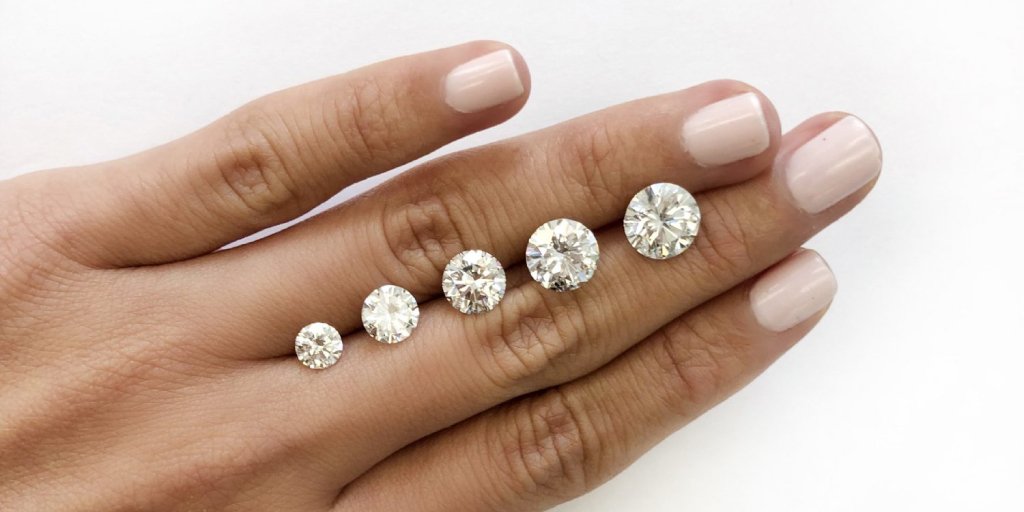Flawless Diamonds: The Ultimate Symbol of Perfection and Prestige
Starting with the word “flawless,” what do you think this means? It refers to anything that does not have any imperfections or defects. Therefore, diamonds with top clarity grades that have no defects within are called “flawless diamonds.”
Since no diamond is completely free of flaws, it is hard to find the ones with an FL grade, and less than 1% of all diamonds get this grade.
The question now arises: is it easy to find a flawless diamond, or is it so rare that one cannot easily find it? Since these diamonds require several severe prerequisites to be met before being developed, they are very difficult to procure.
Fans and buyers are interested in such gemstones, but it is not easy for them to find them. Flawless cut diamonds are gems that are perfect, very rare, and very expensive, and you can’t see any flaws in them when you look at them with a 10x or 20x lens.
So, if you are planning to buy a flawless diamond, you should consider that you will not find it easily.
People want them because they are clean and unique, even though they are expensive. To know more about flawless diamonds, you should read the article till the end.
What Is a Flawless Diamond?
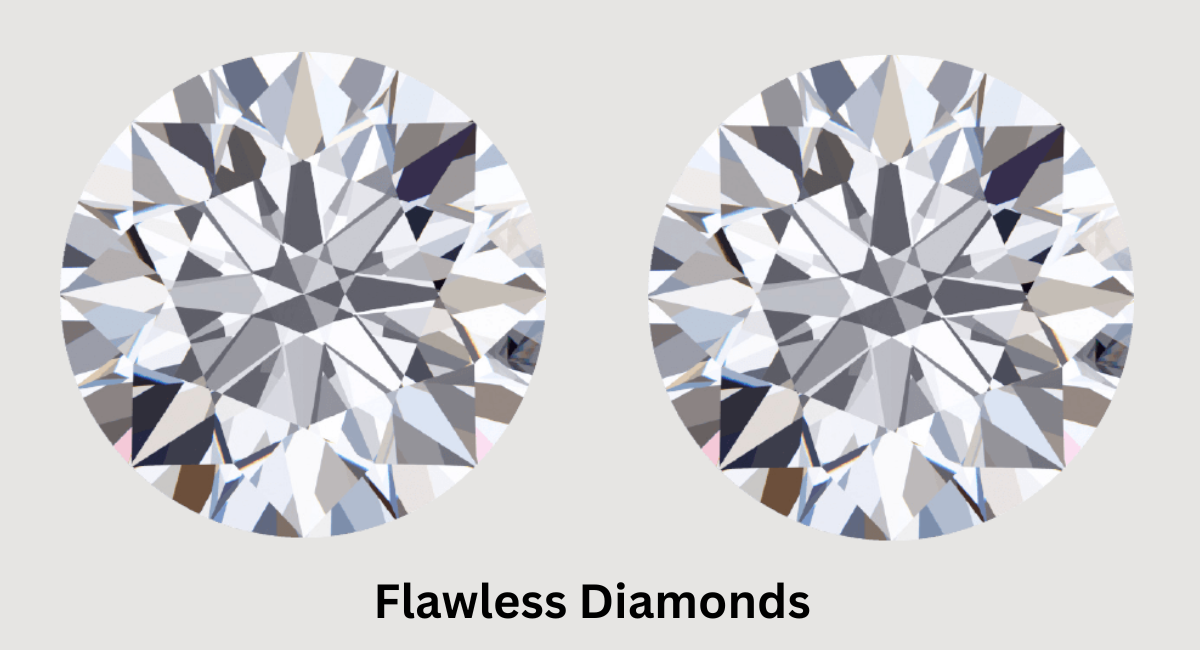
Considering the fact that diamonds encounter harsh conditions throughout their development stage over hundreds of years.
There will always be something wrong with them, even if it’s just a small flaw that can’t be seen with the naked eye but must be visible under a microscope.
However, as stated in the above paragraph, flawless diamonds have no blemishes. How is that even possible? Internally Flawless (IF) diamonds have apparent flaws and inclusions, but none are noticeable.
Hence, a flawless diamond may contain flaws and defects, but it will rarely have noticeable inclusions.
In reality, a flawless diamond is still not considered to be the purest, i.e., it will still have certain imperfections that require a minimum of 60 to 100 times zoom in a microscopic view to see.
Flawless diamonds have no obvious flaws or imperfections. Even though we all attempt to achieve perfection, a defect or three often keeps us rooted.
Under a microscope, it is the absence of symmetry that distinguishes the internally flawless diamond, too. In a deep taste of celestial humor, the IF diamond tells us all that what is on the inside is more important than what is on the outside.
Benefits of A Flawless Diamond
Until now, it has been clear that flawless diamonds are surely not the ones you can easily get your hands on. Despite their high price, a certain class of people prefers these diamonds. Have you ever wondered why?
- Many buyers prefer flawless diamonds because, well, who doesn’t like perfection? It is nothing but a kind of internal satisfaction that people attain while possessing top-notch items.
- From a distance, flawless diamonds create a great visual impact, making them worth buying.
- Flawless diamonds are intended for enthusiasts who seek the prestige of possessing a scarce gem. Even if you have a half-carat flawless diamond, its sparkle can easily light up a room.
- A good variety of the other 4Cs—color, cut, and carat—are available for flawless diamonds.
- Clarity is a thing that dominates in flawless diamonds, but despite that, when you look at the options available in this range, you will surely want to buy it.
- When individuals hear the term “flawless,” their brows crease. Flawless is at the top of the list whenever it relates to gems. Nothing really exists from above. They are incredibly rare. It is humanity’s greatest masterpiece, and there is hardly anything else on the land as beautiful as it.
Should You Buy Flawless Diamonds?
If you aren’t concerned about money and want to get your hands on something worth the cost, you should look at flawless diamonds.
But if you prefer color and cut-related factors in a diamond over clarity, you should opt for other options like VS1 or VVS1.
So first, settle on which factors you are primarily looking for in a diamond. and then make a decision accordingly.
If you still prefer to buy a flawless diamond ring, maybe a key question you should ask yourself is which color and carat size you would like to go for so that it looks fabulous.
Moreover, if you find yourself confused about determining the carat size of your chosen flawless diamond, you can make use of our diamond carat size chart.
To make it clear, we’ll just use the word “beautiful” to express how you desire the stone to appear on her hand.
For different people, perfection may lie in different things. Aiming for a purity grade better than VVS is unnecessary for some. Especially if you plan to enhance the luster and sparkle of the diamond ring by adding more diamonds or a precious metal band.
We suggest that if you have the money, go for a larger carat, a superior cut, and a brighter hue. A bigger VVS diamond will look much more appealing than an FL diamond with a half-carat weight.
Usually, the vast majority of individuals purchasing a wedding ring will not want their fiancee to notice any faults in the gemstone when looking at it.
So, first, have a clear idea if your partner would actually like flawless diamonds, and then decide on the other factor.
To give you a sense of how rare these jewels are, just seven stones weighing more than 100 carats have been auctioned in the past 30 years, and just one of those has been purchased.
Even the recently auctioned 102.34-carat stone was considered “flawless.” It is an oval diamond with a D color grade and costs around $10 million to $30 million.
Flawless Diamond Price
Diamonds with lower clarity appear similar to perfect-looking stones but will be priced much less when compared to flawless diamonds. We’ve talked about how expensive flawless diamonds are several times; let us give you a more accurate figure.
Other than clarity, carat, cut, and color are the most important factors that determine the value of a gem, especially a diamond.
Because the color and cut of a diamond play a crucial role in its price, it’s difficult to give a precise value for a 1-carat FL gem. Furthermore, because these immaculate diamonds are so uncommon, the price of a perfect 1-carat round cut, a flawless diamond with a G– H color ranges from around $4,100 to $7,000 per carat.
Bigger perfect gems are considerably rarer, and their values reflect this; since larger FL, and IF gems are much more uncommon, the price increases rapidly as the carat increases.
Although purchasing an upper purity certification may appear as the best way to ensure a gorgeous diamond, investing in an FL or IF grade is not really a smart investment. How so?
Because no one will be able to tell the difference between an IF and an FL diamond, visually clean stones of lower grades, such as VVS1, VVS2, VS1, and VS2 stone, can be found; these gems will appear just as clear as an FL diamond. However, a flawless diamond will undoubtedly cost you extra money.
If you select an eye-clean VS1 or VS2 diamond, you’ll get a gorgeous stone while paying almost 60% less in comparison to an FL diamond.
How to Choose a Flawless Diamond?
If the flawless diamond range fits your budget and you are now wondering which diamond would suit you the best, then let us help you out.
Color: Of course, each of us would like a diamond with the highest grade of the 4Cs, especially the color grade. The higher the color grade, the more royal the stone will look.
Also, remember that most rare diamonds are colorless when choosing the diamond color. Some gems have subtle yellow hues that are difficult to notice with the human eye. Here “color” does not refer to colored diamonds (blue, brown, black, pink, etc.)
Have an idea about the color your partner wishes to have, or else it is advised to go for the least-colored diamond to make its shape more noticeable and make it look more royal.
Cut: If you are going for a flawless cut diamond, it is recommended that you go for the highest cut level according to GIA or IGI standards. That is “excellent” or “ideal” grades, respectively. A diamond’s cut plays a vital role in depicting its overall greatness.
Carat: In the case of flawless diamonds, it will be hard to find a big-carat diamond as they are scarce. Anything above 2 carats will easily cost you thousands of dollars. Thus, make a decision wisely.
Metal: The metal band you are going to choose will determine the overall look of the diamond. Gold, silver, or platinum are the best choices to match with a perfect diamond to make it look better overall.
In the end, it may be difficult to identify “the one absolutely faultless” diamond, as there might not be such a stone. As FL gemstones are rare and unique, they have a steep cost, yet there are plenty of them available on the market that you can look at.
Fl vs IF Diamonds: What’s the Difference?
According to GIA’s clarity rating, IF gems are one grade below FL (flawless diamonds). These, like flawless diamonds, are exceedingly rare, accounting for fewer than 1% of all precious diamonds.
- Purity: Under 10x magnification, an FL (flawless) quality diamond exhibits no imperfections or flaws. It has the greatest purity grading as well as the most singular form of gem brilliance.
- Rarity: Flawless diamonds account for fewer than 1–1.5% of all market gems. While IF diamonds account for 1–2% of diamonds on the market.
- Imperfections: An IF (internally flawless) gem has little or no obvious internal defects but could have minor surface flaws. As a result, the primary distinction between FL and IF is the existence of imperfections on the diamond’s surface.
Superficial surface roughness, irregularities, or patches of polish markings could place a stone in the IF category rather than the FL grade.
Those gems are immaculate, extremely rare, and immensely valuable, with really no apparent defects under 20x, 50x, or even 90x magnification.
- Pricing: With the exception of pricing differences, there is really not much of a structural contrast between these two types of gems being the best diamonds available in the market. Additionally, we have a Diamond price calculating tool for you.
- Distinguishing: You can’t tell the difference between FL and IF diamonds without a microscope and the knowledge of a trained jeweler.
However, specialists may also have difficulty differentiating between FL and IF. This is usually a negligible difference because even relatively close blemishes on an IF diamond are just so tiny and unnoticeable that they scarcely affect anything.
- Highest Quality Diamond: Some newcomers make the error of believing that a D-colored, IF-clear stone translates to the highest natural quality of a diamond.
In practice, the necessary variation between FL, IF, and VVS diamonds is so small that there is no substantial difference in their clarity and brilliance.
Nothing affects a diamond’s look (sparkle and scintillation) more than its cutting grade. So, in addition to the clarity grade, have a look at the cut grade.
- Which One Should You Buy?
Any individual purchasing a fancy, high-grade, flawless diamond may think it is a good choice to pay such a steep price. But what for?
Since no one can determine whether it’s an IF or FL diamond, you will have diamonds that cost double that of a VVS1 or VS1 that are eye-clean and look flawless (relatively).
Choose a flawless cut diamond for your engagement ring only if you have enough money and want to give your partner the best stone possible.
Conclusion
If you have a big budget for your engagement ring or are a passionate collector of rare gems, flawless diamonds are an optimal choice. As discussed, flawless gems are pretty uncommon since they must meet several demanding standards before being made.
It’s no surprise that bigger diamonds frequently earn record-breaking prices at auctioneers. If you are going for a flawless diamond ring, be ready to spend a ton of money.
FAQs
How are flawless diamonds graded?
Diamonds are graded for clarity using a scale established by gemological laboratories. The scale ranges from Flawless (no inclusions or blemishes visible under 10x magnification) to Included (inclusions and/or blemishes visible to the naked eye).
Are flawless diamonds completely without any imperfections?
Yes, a flawless diamond is free from both internal (inclusions) and external (blemishes) imperfections when examined under magnification. It signifies the highest level of clarity in a diamond.
Can flaws be removed from a diamond?
Flaws cannot be removed from a diamond; they are inherent characteristics formed during the diamond’s creation. Cutting or polishing may enhance a diamond’s appearance, but it cannot eliminate internal imperfections.
How can I verify if a diamond is truly flawless?
Certification from reputable gemological laboratories, such as the Gemological Institute of America (GIA) or the International Gemological Institute (IGI), provides an accurate assessment of a diamond’s clarity. Always request and verify a diamond’s certification when making a purchase.
How much is a flawless 4 carat diamond?
The price of a 4 carat flawless diamond can range from approximately $30,000 to over $1 million, depending on various factors including cut, color, and overall quality.
What does a flawless diamond look like?
A flawless diamond appears crystal clear and lacks any visible inclusions or blemishes, even under 10x magnification.

